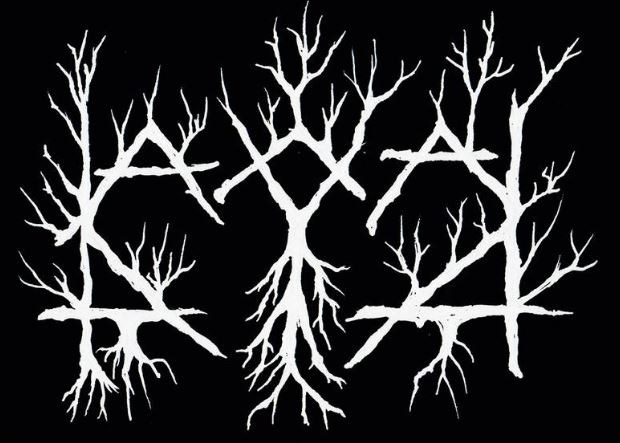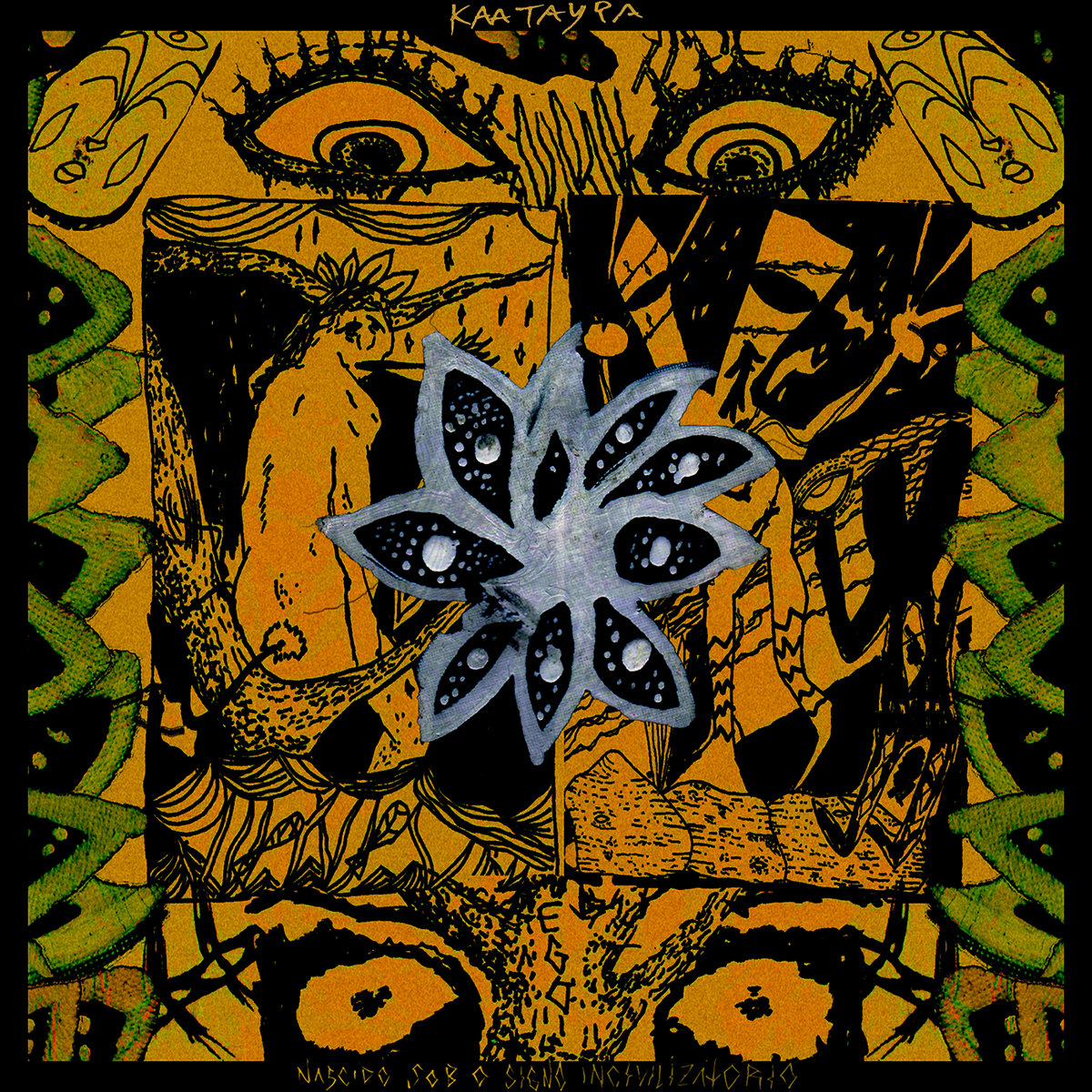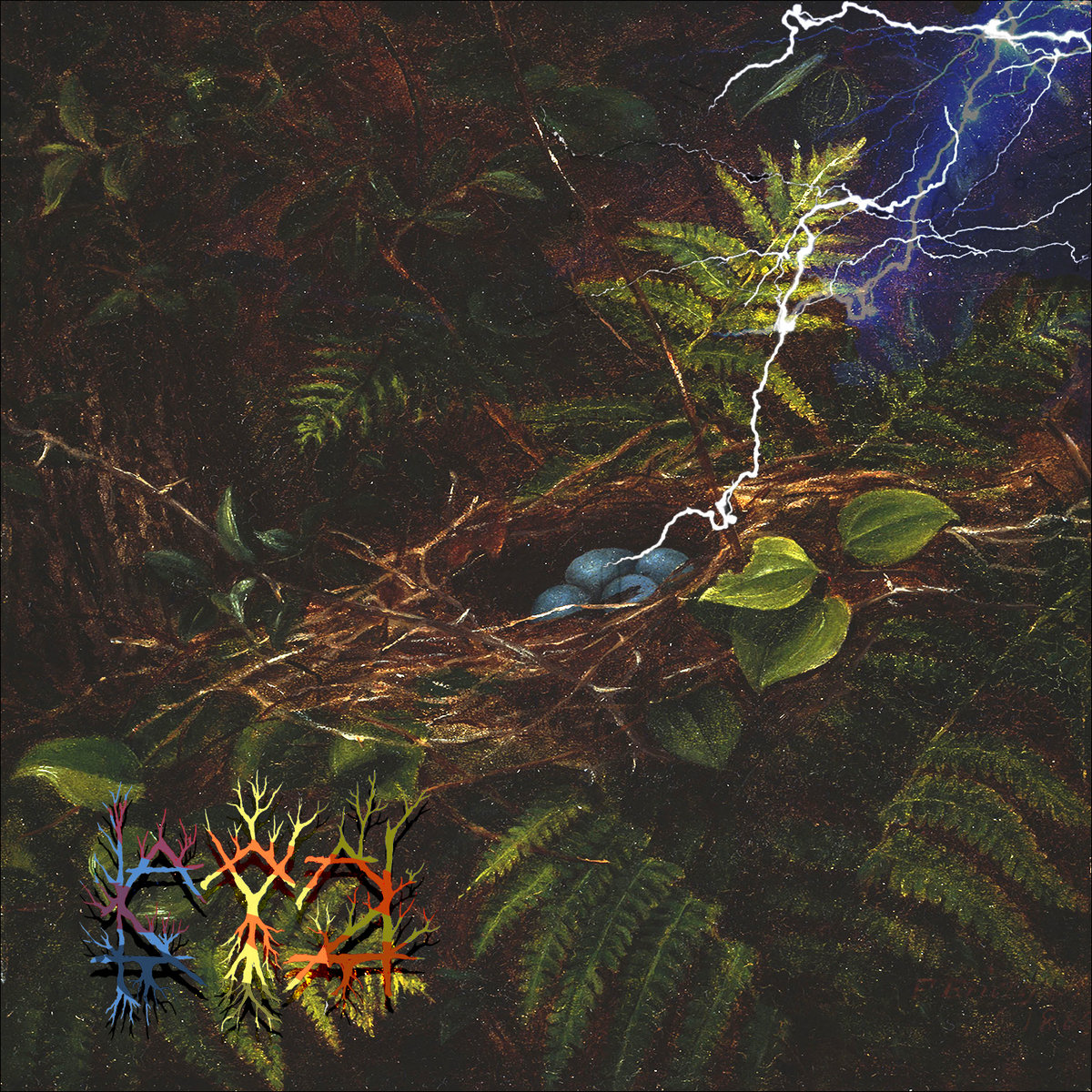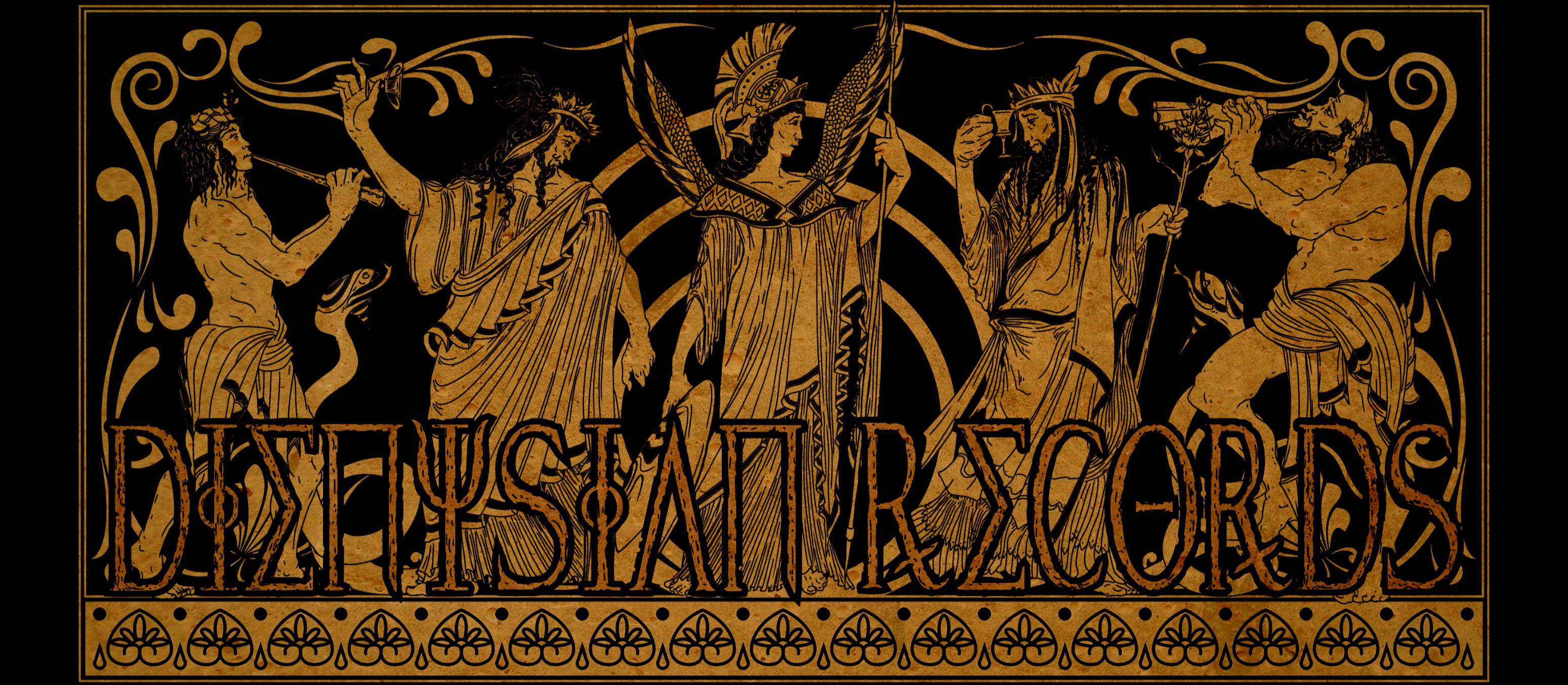As ferocious surges of sound bursting from the heart of the ancient rainforest, this Brazilian one-man project named Kaatayra has been impressing the underground with his innovative writing styles that transcend genre boundaries. Conceptually focusing on an inward exploration of the primal heartbeats and their conflicts with the modern world, while magically blending the traditional folk elements and electronic music with atmospheric black metal, Kaatayra has proved itself as one of the most unique bands out there that you just have to give it a listen. We had the pleasure to converse with Caio Lemos, the man behind this project, over the band’s discorgraphy and influences, as well as his personal philosophical view regarding nature, traditions, and the pandemic’s impact on them both.
Interviewed by Aymparch
Thanks again for accepting this interview Caio Lemos. How you doing these days and how does the current pandemic situation in Brazil look like? What kind of impact does it create upon your personal life and music?
Caio Lemos: Thanks for the invitation! Well, the situation in Brazil is definitely not good. The first thing that comes to my mind is thoughts ofdisapproval and dissatisfaction with the way Bolsonaro has handled and continues to deal with Pandemic. In my view his actions as the president made situation worse for Brazil. This situation, as in many other countries, is very serious, not only does he disregard his public speeches, but also the federal government did not take effective measures to reduce the impacts. And nowadays he neither encourages vaccination nor talks about its importance, stating things like “Vaccine anyone you want” instead of understanding that this is a matter of public health and responsibility for the lives of others. But I think Bolsonaro is not the only problem that has to be fought. It is as if the pandemic situation benefits who has already power, the system and it courses, the interest of the rich. The problematization of the poor is welcomed by the maintenance of the capitalist logic. Bolsonaro endorses it.
This whole situation and following the political situation in Brazil can drives one crazy. It affects my sanity. A little while ago, I stayed away from news and I haven’t been following closely to be able to rest a little from this melancholy that springs up. I don’t think it’s the ideal attitude, but that’s what I need to do now as personal life is already too much to deal with.
About making music, I would say that everything I feel and think at the moment affects the way I compose and what I write in the lyrics. So, indirectly, this situation affected the composition of the last album, I felt not only the will, but the need to use music to help my spirit feel better.

As an unforeseen tide of cleansing bursting from the mystic sea of trees from Brazilian rainforest, Kaatayra’s first two exceptional full lengths are arguably one of the most exciting discoveries in terms of extreme metal that year. So could you share with us the initial reason you create Kaatayra and the reason of keeping it as an one-man project? What’s the meaning behind the band name “Kaatayra”?
Caio Lemos: I was in a period of life that I was trying to improve my mental and physical health after a difficult period. I sought this by connecting with nature, whatever that means. But, to be more specific: taking walks in the woods, trails to waterfalls, eating better and spending more time next to the green.Today I see that it was a search to find some spiritual meaning in anything that exists. My disbelief, lack of faith and skepticism had already hurt me a lot. But, for a long time I was like this and to be honest still am. But the journey of search was a good thing to do. This movement of meeting with nature, being close to it, is the thing that most makes me feel good in that “spiritual” sense.

Human-animal is a very crazy thing to be, to witness. Sometimes I feel that every day I have small existential crises of not having overcome just the fact of existing, of the universe existing. It is beautiful at times and terrifying at other times. But, it is not frightening when I am alone in the woods, in silence. No music or books, just breathing and thinking what has to be thought. Kaatayra, for the most part, is about these things, so I think it was a way to celebrate nature as I was every connected with it. But, nowadays, I don’t feel the need to always be talking about the natural. I will always let it be spontaneous, that’s why I believe it will always be a project isolated from other people. I want to let it be an honest project coming from my body and mind naturally, without different interferences.
Kaatayra is kind of a made-up word that means “Son / Daughter of The Woods.”
It’s always impressive to see how far certain truly innovative one-man black metal projects can push the existing genre boundaries, and I have to say the first time I finished listening to your debut No Ruidar da Mata que Mirra I was completely amazed by how tight and fresh the riffs and productions sound: 6 tracks capturing the essence of folkish and atmospheric black metal, with fair amount of other elements like progressive rock and techno. It is also the only album that have a rather shorter song length and less consistency in between tracks: at least from my perspective, on your debut, each track seems to represent an angle that’s independent from the others but all of which are dedicated to a central theme——Nature’s roar of anguish and a disdain towards urban life. So how did the writing process of this album look like and was it different from your other releases?

Caio Lemos: I confess that I could not say in detail how was the process of making the first album because it was without expectations or rationalization, so I don’t remember very well. Everything came naturally. I improvised the riffs and recorded only once. I didn’t think much about compositions, structures or any other aspect like that. All other albums also had that attitude. But, I believe that in the first it was even more like this. I didn’t pay attention to the production or capitation of the instruments. I just went with the first way that came up. On the last album I tried my best to mix and master better, I didn’t get exactly what I imagined, but I was satisfied with the result. So that was it, I sat in the chair, in front of the computer and played several riffs. The lyrics were the first thing to be done and the main thing for me at the time. Then I sounded them out in black metal form. The lyrical content is extremely important to me. And until now, all the lyrics were done before the sounds-composition.
One can easily feel the abundant mixture of emotions in No Ruidar… through soul-crushing melodies and small interludes of folk ambience of trance, almost like a dirge written by forests themselves over their longings towards a forgotten past. Why did you choose this theme particularly — a theme that will continue to be your central focus throughout your whole discography? I’m also curious about what kind of bands musicians who influence you and your quite surprising take of techno in the closing track: why use such a “modern” type of soundscape in depicting a song “against urban delusion”?
Caio Lemos: I can’t say any direct influences that I had for this album. I think that everything I heard over time and I liked it stayed with me, in my memories hidden in the unconscious. In the memory. So everything I’ve heard through all my life, inside or outside of metal, has influenced me in some way. But I would shoot that naturally I mimic some Skagos, Alda and Wolves in the Throne Room riffs in this album.
I don’t feel I “choose” a theme and this is a very mysterious thing to me. It couldn’t be different you know? It is what was and is inside me. I couldn’t do any Kaatayra music about anything that is not important to me. It is always about the things that flourishes in my mind and I don’t feel I have control of it.
So if one day I started to wonder a lot about the cosmic existence of Saturn for example, perhaps Kaatayra could be, for a moment, about it. I can’t see that happening but I wouldn’t know for sure.
About the last track to be techno / trance:
I already had a phase of just listening to techno. I have been craved for wanting to study and produce. I read about and watch documentaries. Regarding trance, it was with this style that I had one of the most incredible experiences inside a party that was playing it. I will never forget how it open my minded about music and about how all sounds and noise can in a way or another make music and be part of it
Conceptually I wanted the techno / trance part to represent the urban world. That is why it is so contrasting with what comes before. The acoustic parts and melodic black metal as its main focus. The idea that an electronic part came out of nowhere amused me a lot and it realized my idea.
Let’s talk about your second full length Nascido Sob o Signo Incivilizatório, a release that musically and thematically closer to your latest output Toda História pela Frente: both are one step further from what you’ve achieved from your debut, the track length got even longer while the writing styles got more dense and complicated from time to time. The most noticeable characteristic, in my opinion, is how in these two albums all the tracks connect to each other and respond to your lyrics. Especially in the second track where the music sort of cooling down and flowing towards a repetitive trance of folk tunes, when you singing about how the cleansing fire destroy the modern and upon the ashes of urban civilization the new (or old I should say?) life reborn. So I’m wondering if you finish the lyrics and set the theme for this album first then build musical blocks accordingly and if this is the reason you extend the track length. How does it feel like composing lengthy epic like these? What kind of difference in terms of writing process and emotions between Nascido… and Toda História…and the other two?

Caio Lemos: All lyrics, from all albums, were made before the sounds. I guess in “Fogo! Na Babilônia” and other tracks I was lucky enough to make in a way that the lyrics combine and make feels as a whole. I don’t always make a riff thinking about the connection to that part of the lyric that will be sung. But in several moments, I think this happened by luck.
For example, in the third track of the third album there is a part of the lyrics that there is a call of a “Rejoice!” so is a positive part. And the music goes in a more happy tune. It was a good coincidence, not on purpose, because all the riffs comes in a improvisation way as many of the vocals.
I don’t really think : “I need to make lengthy songs.” I never can say for sure about the process of composing because first, I don’t remember very well about the time that was happening, because is like I’m not really present at the moment of making riffs. I zone out and things flow naturally. It just happens the way it is.
I know that at the moment of making the first and the third album I was in a way better mood than when making the second and fourth. This definitely translate on the music and lyrics. I can say that the writing process have been the same for all albums with different personal life moments and feelings.
6. You did a cover song Preciso me Encontraras a tribute to Candeia and you seem to have a deep passion about Brazilian folk music. How important do those childhood legends mean to you and Kaatayra as a project and how do they connect to the lyrical theme you pursue through your music?
Caio Lemos: I guess to the lyrical theme it doesn’t connect so much and I don’t have a precise reference of any sort.
It is natural that Brazilian folk music permeates my life as it is practically in all surroundings. In the family and friends memories. In celebrations and gathering moments. It is within me, I wanting or not. I have a big respect for Brazilian folk music. It is very rich and with a lot of variations that is connected with the history and culture of Brazil. Each region has it owns manifestations so it is very important to me. To mix with black metal is a magical thing, I can fill two sides of making music that is important to me.
7. Finally we can talk about your third full length and oh boy just how awesome it is: an album made out of pure acoustic folk tracks that sound no less intense and cathartic than your previous materials. Just how did you come up with this idea of recording this album in such a manner? Also for the theme of this album. If the google translation doesn’t botch this time while judging from the album cover, Só Quem Viu o Relâmpago à Sua Direita Sabe seems to narrate a story of enlightenment (the lightening) and a sort of philosophical atavism (abandoning human body/self and returning in the form of eggs). Was my perception correct? Do you mind elaborate a bit more on the theme of this album?

Caio Lemos: Your perception was very cool and creative! Thank your for that. I did not combine the image with the theme of the album in that way you suggested now. But, you are right about the topic.It narrates a story of enlightenment, accepting of death and estrangement about being human. I don’t really know about atavism as I never studied very much about it.
This album was deeply influenced by what I felt, heard and saw in Ayahuasca experiences. So it has this mystical air for me. The lyric of the third track “Só quem viu…” is the most important to me and it kinds of resumes all the feeling of the album.
It almost describes one of my experience with Ayahuasca.
“Who listened the thunder and drank the poison” it is about drinking the tea.
The thunder it was because the music that was playing began with lightnings and it was what kick me in the force of the tea. The enlightenment that this experience made me have is of the Doubt. The realization of having no certain about any spiritual or religious belief. Like god as an Enigma. God has many faces and it depends on the delirium of each individual. My delirium is of a big question mark. And I found it to be beautiful. And I embraced this until this day.
A lot of riffs I make in an acoustic guitar, even for all other albums, because in the acoustic guitar I can hear better all the notes played in a chord for example, compare to playing in a wall of distortion. After so much playing black metal in an acoustic guitar, I started to see the pattern of the blast beat within the sound of tremolo picking in the acoustic strings. I thought that would be great to make the blast beat in a drum along with the sound of the up and down picking.
Acoustic guitars have lovely sounds and when you add reverb you can almost have this synths sounds. It is very pleasant to me. Also, the album couldn’t be with distortion because I was in the awe of the natural word, about the sun, the woods and water in general. I couldn’t translate my feelings using distortion. It had to be on acoustic instruments.
8. To be honest, I always love to associate your music with those writers of Latin American Boom who define and popularize the concept of magical realism: giving the mythical and primevallandscape you manage to evoke through your music and cover arts. So I’m wondering if literature plays a central role in your creation of Kaatayra? If it does, what are some literary inspirations that influence your writings and concept?
Caio Lemos: Only one writer comes to my mind: Manoel de Barros. I love how he makes poetry about poetry and about writing poetry. He seems to see nature with a child eye, in a magical way and write about it. He also plays with the words and deconstruct its meaning and build other-ones as if he brings the aware of the illusion of the words. The emptiness, and the ability that the words have to create phantasms. His writing makes me think what is the real importance of some words and its conception in an essential way? It is funny how sometimes seems like and illusion as the words don’t really grasp reality in its pure form. Besides him I would say there is no literature influence.
9. I read another interview you did with Machine Music in which you include a brief list of local bands (from grindcore to electronic music). So giving your passion about folk and electronic, what kind of Brazilian acts that you think are worth checking out and maybe got overlooked by our foreigners? What are some of those albums you personally enjoy that came out in 2020? Also I always keep wondering if you are behind or in some way relate to the project called Bríi, giving the stunning similarity in aesthetic and writing styles between it and Kaatayra.
Caio Lemos: Probably my favorite Brazilian act is Deaf Kids. But I think they are quite known outside Brazil already. Rakta is also a very good band that is affiliate with Deaf Kids.
About 2020 releases I liked a lot of “Bom Mesmo é Estar Debaixo d´Água” of Luedji Luna. It is so well played and crafted with a lot of memorable vocal melodies (editor’s note: this album is freaking amazing, go watch it in full from start to finish, you won’t regret it). It was probably the album I listened the most along with “Histórias da Minha Área” by the rapper Djonga.
Yes, Bríi is another project of mine which I felt the necessity to work other kind of words and feelings. For me it is very different from Kaatayra, almost as I have to reach another mind of personality. I was very much into Terror/Horror movies by the time of making the Bríi album.
10. Alright, what lies in the future for Kaatayra in 2021? Will we witness another two full lengths like you did in previous years? Also giving the current global pandemic, how do you perceive it from the perspective of Kaatayra? Does it represent some sort of punishment, a “Babylonian Fire”, that the nature unleashed unto modern human society? How does the pandemic impact the rainforests and those aboriginal groups who reside in them? Will Kaatayra explore this theme in future?
Caio Lemos: I don’t know what will happen about Kaatayra in 2021. I know now that I’m working on a new album and it has been a very different process of making these new songs. I guess it is more experimental and I have been influenced by minimalistic Music of Steve Reich, Arvo part, Philip Glass and others. It is the first album that I’m trying to “construct” the songs. Very different of the improvisational aspect of the others album.
I can’t see the pandemic situation as a punishment and not a “Babylonian Fire”. I write about the fall of humanity and civilization but in my heart I want the best of it. I want a better world and the joy and peaceful of everyone, but here I am talking in dreamy way, because in a real sense I am very pessimistic. We all know that the world doesn’t work like this and if I would guess it never will.Sometimes I try to have hope, what could we do if not having hope of a better future?
I don’t really know about epidemiology but it was a consequence of human actions as almost everything of this kind I Guess? Don’t know if it could be prevented. There is not a real notion of how CoronaVirus is affecting Aboriginal groups, the extension of it. But it is affecting. I guess there is distant tribes that we can’t really know if are being affected or if it has a problematic situation what makes difficult for these places have the support it needs. Once again, the Brazilian State had contributed to the spread of this virus and it was mislead actions of land grabbers that wants indigenous land that probably influenced and spreading virus, a long with the contact of city people in these tribes. With pandemic or don’t, in my view there is a systematic genocide of indigenous people which exists about hundreds of years, now wouldn’t be different.
11. Thanks again for accepting this interview. Lets end this one with one of our records’ tradition – What are your favorite booze that you might want to recommend to our readers in China? Anyways, our best wishes to your life and looking forward to more materials from Kaatayra! Stay safe and take care out there. Cheers!
Caio Lemos: Thank you very much for the invitation! I’m not the biggest drink connoisseur but I would recommend beer, wine and lots of water!Best wishes to you all, all the readers and all the loved ones. Stay safe!


